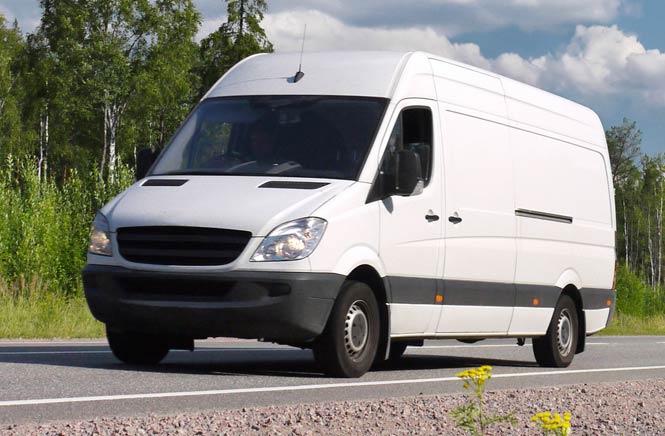Tread Depth for Vans and LCVS
Vans and and light commercial vehicles are subject to the same tyre law as cars so they must have a minimum of 1.6mm of tread across the central three quarters of the tyre around its entire circumference. Tyres must also be well maintained in order to keep the vehicle stable as it travels around corners; to help it accelerate and brake effectively; and to work in harmony with the vehicle’s main suspension system to carry loads safely.
Basic checks such as making sure tyres are correctly inflated can make all the difference, as the pressurised air inside the tyre helps to support the weight of the vehicle and its load. Tyre tread depths are vital for ensuring vehicle safety and vans are particularly vulnerable as they can be heavier than normal cars, and often carry loads. The extra weight carried by a van also increases its stopping distance, making it even more important that tread depths meet safe and legal standards.”
Specific Tyre Requirements
Vans, even car derived vans, usually require specific tyres which are designed to cope with the payload of the vehicle. These can be all terrain van tyres or winter van tyres. Car tyres are often not suitable for vans. If in doubt, speak to a local tyre retailer for specific advice on the most appropriate tyre your needs and load requirements.
Whatever type of tyres fitted to your vehicle, they are of fundamental importance to road safety as they provide the only contact a vehicle has with the road. Illegal, defective and under-inflated tyres are a contributory factor in the death or serious injury of motorists. They also play a part in accidents where people receive minor injuries. Download our handy guide to Van tyre safety (PDF, 320k)

Introduction
Tyres on vans and light commercial vehicles (LCVs) lead a hard life, carrying loads and doing multiple drops, often in tough working environments such as construction sites. Economic pressure on businesses during the recession has also led to many older vehicles not being replaced. As a critical vehicle component, it’s important to carry out regular checks on vans of all ages to make sure their tyres are still safe and legal. With margins for businesses tighter than ever and fuel and other costs rising, the impact of a tyre-related problem can be serious in terms of vehicle downtime, missed appointments and repair costs. Therefore regular checks on your vehicle’s tyres can help save time and money in both the short and long term.
Top Tips for Tyre Maintenance
- Use a reliable and accurate pressure gauge to check the pressure of van tyres at least once a month or before a long trip.
- Check the pressure in all tyres not forgetting to check any spare tyre(s) as well.
- Tyre pressure should be checked against the vehicle manufacturer’s recommended operating pressures for the load being carried.
- Check the pressure when tyres are cold or when the vehicle has travelled less than two miles.
- When checking pressures, give the rest of the tyre a thorough visual inspection. Remove any stones and other objects embedded in the tread. Look out for any cuts, lumps or bulges.
- If you are unsure on any aspect of tyre pressure or tyre condition take your vehicle to an approved fitting centre and speak to the experts
Download our handy guide to Van tyre safety (PDF, 320KB)
Common FAQs
Vans, even car derived vans, usually require specific tyres which are designed to cope with the payload of the vehicle. Car tyres are often not suitable for vans. If in doubt, speak to a local tyre retailer for specific advice on the most appropriate tyre your needs and load requirements. Whatever type of tyres fitted to your vehicle, they are of fundamental importance to road safety as they provide the only contact a vehicle has with the road.
With costs like fuel rapidly rising, businesses face increasingly tight margins and can ill afford the impact of any tyre-related problems such as vehicle downtime, missed appointments or repair costs. Regular checks can prevent these problems helping businesses to save both time and money.
Also, by keeping tyres properly inflated, van drivers can travel further on each tank of fuel and reduce their CO2 emissions.
Merge content from “What responsibility to van drivers have regarding the tyres on their vehicle?” and update FAQ title to “What responsibility do van operators, business owners and van drivers have?”
“Van operators and business owners have a duty of care to their drivers and must ensure they are provided with a safe working environment, which includes the provision of safe and roadworthy vehicles.
Since the Health and Safety Offences Act came into force in January 2009, UK courts have greater authority to prosecute businesses for committing offences such as fitting illegal tyres or faulty brakes. The maximum penalty has increased from £5,000 to £20,000.
Van drivers have a duty of care to ensure their vehicle is safe and roadworthy. Drivers found to be driving on illegal tyres face personal fines of up to £2,500 and three penalty points for each illegal tyre, irrespective of whether the van is company owned or not.”
Van drivers have a duty of care to ensure their vehicle is safe and roadworthy. Drivers found to be driving on illegal tyres face personal fines of up to £2,500 and three penalty points for each illegal tyre, irrespective of whether the van is company owned or not.
Overloading is one of the most common offences identified at roadside checks, and you could be fined up at £800. Overloading also accounts for 70% of light commercial vehicles being taken off the road.
Overloading isn’t just bad for business, it is unsafe. If your van is heavier than it is designed to be it will be unstable and take longer to stop. Overloading also puts extra stress on your tyres. The excess weight changes the tyres’ shape leading to a build-up of heat when it is being driven.
This could lead to a catastrophic failure of your tyre, with devastating consequences
As vans frequently carry loads, it’s essential that tyres are inflated to the correct pressure. When a tyre is under-inflated (or overloaded), excess heat builds up within the tyre, which greatly increases its likelihood of experiencing a rapid deflation. Tyre failure of this nature is a major safety risk as it can cause the driver to lose control of the vehicle and can also put other road users at risk. Van operators should ensure that their tyres are inflated to the correct pressure depending on whether the vehicle is laden or unladen.
You can find your tyres’ maximum permissible weight and your load index in your handbook. You should always ensure your tyres have the correct load index for your van and that your tyre pressures are right for the load. Tyre pressures can be found inside your handbook, inside the filler cap or on a plate on the front door sill.
Under-inflated tyres experience rapid wear in the shoulder area of the tread as more of the load is supported by this area. Driving on over-inflated tyres results in higher wear in the centre of the tread. Keeping tyres inflated to the recommended pressure for the vehicle and load ensures an even contact distribution and a more even wear rate, helping to make the tyres last longer.
Tyres are complex components that have been engineered to work in harmony with the van’s braking, steering and suspension systems. When a tyre is under-inflated, it contains insufficient air to support the weight of the vehicle properly. This can adversely affect acceleration, braking and cornering, potentially making driving unsafe
Current UK law requires that the tyres fitted to vans must have a minimum tyre tread depth of at least 1.6mm* across the central three quarters of the tread and around its entire circumference. Drivers found in breach of this law face a personal fine of up to £2,500 and 3 penalty points for each illegal tyre.
Adequate tyre tread depth is vital for vehicle safety. Vans are particularly vulnerable as their heavier mass means stopping distances are longer than those of cars. Insufficient tread depth can extend stopping distances even further in wet conditions.
It’s simple to check your tread depth by using a 20p coin. If the outer band of the coin is visible when inserted into the tyre tread grooves, the tyre may not have sufficient tread depth and should be examined further by a professional.
*For heavy vans above 3,500 kg maximum GVW (Gross Vehicle Weight), the truck tyre minimum tread depth of 1 mm applies.”

